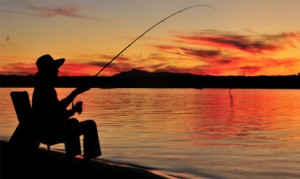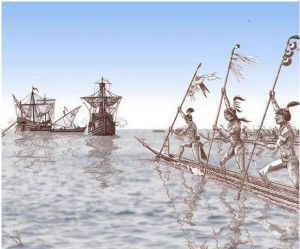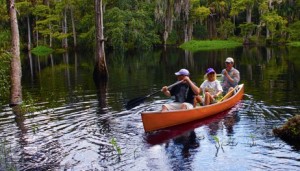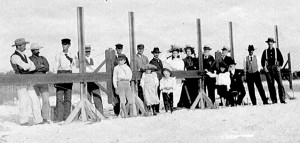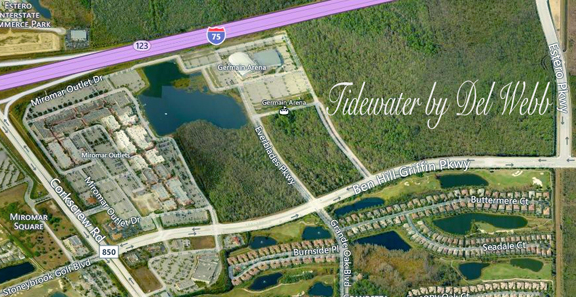 Only moments from their homes within Tidewater, Estero, residents can conveniently connect with the phenomenal facets of life that compel so many to consider this as “The Best” area of the region.
Only moments from their homes within Tidewater, Estero, residents can conveniently connect with the phenomenal facets of life that compel so many to consider this as “The Best” area of the region.
You’ll Love the Location
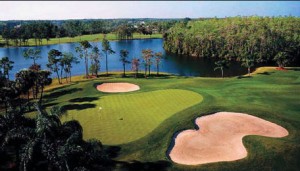
The Arnold Palmer Signature course at Wildcat Run is among the great golf options available mere minutes from Tidewater.
Estero is a community geographically situated between the larger Metropolitan Statistical Areas of Fort Myers (to the North) and the Collier County City of Naples (to the South). Though home to some 23,000 full-time residents, Estero’s numbers swell each season with the migrational proclivities of snowbirds. Over the duration between the 2000 and 2010 census, Estero’s population blossomed by more than 137 percent and it continues to grow. That growth isn’t simply measured by new homeowners, but new business too, as is the case with the Hertz Corporation who recently begun construction of their new global headquarters here. The ease of accessibility and attractive allure of Estero is partially prompted from the fact development requirements are more stringent than that found in most communities. Estero standards put greater restrictions on density, requirements on landscaping, respect for ecological sensitivity, and interconnectivity with the community, all of which contributes to the quality of life enjoyed by residents.

Miromar Outlets, home to hundreds of shops and restaurants, is among the major retail centers located only moments from Tidewater.
Homes within Tidewater, Estero, are situated near the intersection of Ben Hill Griffin Road and Three Oaks Parkway. These byways are not only mere moments from the region’s vital traffic corridors of Highway 41 and Interstate 75, but also lead directly to Southwest Florida International Airport. Residents can quickly and conveniently access all points north, south and beyond. But it just so happens that so many of the places most people want to go are in the immediate vicinity of Estero. For example, fashionistas and epicureans drawn to fine dining have venues that include Miromar Outlets and Coconut Point Mall. These sophisticated shopping centers collectively provide some several hundred options in leading brand retail operations, top designer boutiques and popular restaurants. Beyond the dining and retail opportunities, these same venues also serve as host for a variety of other social and cultural events which include the region’s most popular arts & crafts fairs that annually attract thousands of visitors. There’s also distinctive interior design elements and fixtures which can be found at Miromar Design Center; home to more than 45 showrooms highlighting works from world-leading home good designers.
For those who clamor more for competitive sport, Estero provides several opportunities to cheer on favorite home teams. Estero’s Germain Arena is not only home to the Florida Everblades Hockey Team, but also the most dynamic team in arena football – the championship winning Florida Tarpons. For those who enjoy NCAA basketball, Alico Arena at Florida Gulf Coast University is only a few minutes drive from homes within Tidewater, Estero. This venue became known as “Dunk City” after the bracket-busting FGCU Eagles made NCAA history in 2013 by becoming the first 15th seed team to ever advance to the Sweet 16. For those who enjoy baseball, the ball fields of Hammond Stadium and Jet Blue Stadium are also only minutes from Tidewater. These fields respectively serve as homes-away-from-home for the Minnesota Twins and the Boston Red Sox. While baseball takes center stage each spring, all know that every season in Southwest Florida is great for golf. With its per capita composite of public and private holes, Southwest Florida has been deservedly heralded as “The Golf Capital of the World,” but Estero is at the epicenter of all this activity. Some of the region’s top courses can be found here, including: Old Corkscrew (the only stand alone Jack Nicklaus Signature Course in the region); Wildcat Run (an Arnold Palmer course that he once suggested as being among the finest in the Southeastern U.S.); and Stoneybrook (recognized among the longest courses in the region).
Estero’s appeal is further elevated by the beauty of nearby beaches. Some of the most sensational shorelines along the Gulf of Mexico can be found only minutes from homes within Tidewater, Estero. Should one wish to scoop shells from the celebrated sands of Sanibel Island or enjoy an intimate interlude along the shores of Lover’s Key, these and other popular beaches are just a short drive from the community. For those who enjoy boating, fishing or simply basking beneath the sun, life in Southwest Florida provides unceasing opportunity. And beyond the beaches, shops, restaurants, sports and other attractions, Tidewater residents will also be able to readily connect with schools, churches, healthcare services and so much more. It is rare to find a private community which empowers its residents to so readily access all that awaits moments from your home, and it is for this reason that “location” can be included as one of the luxuries of Tidewater.
Historical Perspective
While so many have come to regard modern Estero as a Southwest Florida paradise, that very reputation began centuries ago, or even millennia, especially when considering these very lands were once sacred to the Calusa Indians who were among Florida’s earliest and most enigmatic of inhabitants. Given the abundance of natural resources in flora and fauna on which the Calusa so thoroughly thrived, they were able to develop a highly complex civilization that flourished while other aboriginals struggled to survive. The Calusa advanced in the creation of a two-tier caste system with laborers and nobles, enacted elaborate ritual ceremonies, engineered the building of canals and shell mounds, but also took time to produce creative works of art. They also produced a highly formidable army. The word “Calusa” equivocates to “Fierce People,” in fact, they were so feared that other tribes often delivered tributes to their king in hope that they would be left alone to live in peace. The tribe’s hostility was particularly hyped after interaction with early Spanish explorers who often needed reminding that their visitations were neither wanted nor welcomed. In one such instance, Ponce De Leon’s fabled quest for the Fountain of Youth abruptly ended after he died from an infection prompted from meeting the business-end of a Calusa poison arrow. The Calusa remarkably withstood Spanish conquest centuries longer than any other aboriginals were able. Resistance finally waned after the 1702 war between Spain and England; a conflict that led to the arming of other Native American tribes who eventually ventured into Calusa territory in conjunction with slave raids. The Calusa were literally out-gunned. Disease had also taken its toll. Some were believed to flee to Cuba, but here in Florida, the shell mounds and artifacts are all that remain of this once great civilization. Today, one of the region’s greatest archeological treasures can be found on what is known as Mound Key. Located in Estero Bay, researchers believe this small island was historically known as “Calos,” the very capital city of the Calusa civilization. Visitors can only access Mound Key by way of canoe, kayak or other vessel, but that’s easily accomplished by taking a short journey on the Estero River.
Officially deemed as integral to Florida’s Statewide System of Greenways and Trails, the Estero river is a six-mile long waterway that gently ebbs in a windingly westward fashion from Estero toward the estuary waters of Estero Bay and the Gulf of Mexico. The river’s brackish waters are a great place to go fishing, bird watching or simply escape distractions of the modern world. While paddling beneath the fertile canopy of vines and branches encompassing the narrow river, the jumping mullet, stalking alligators and ever vigilant heron and crane combine to impart a sense that you’ve just stepped back in time. That feeling is further driven home upon turning a bend beside the preserved compound of the 19th Century settlers who are actually credited for founding modern Estero.
These pioneers were devotees of an interesting physician who also dabbled in alchemy, philosophy and earth sciences before assuming the more demanding role of messiah. His name was Cyrus Teed, and he was a distant cousin of the Mormon prophet Joseph Smith. Teed’s emergence as messiah was apparently ordained following an encounter with a divine spirit who was gracious enough to affirm it. The spirit apparently revealed this and other vital information after Teed got knocked unconscious by an electrical shock in a botched alchemy experiment. He is said to have awoken with new wisdom and a new sense of purpose. Teed changed his name to “Koresh” which is the Hebrew and Persian equivalent of “Cyrus,” (as in Cyrus-the-Great, the ruler who allowed his Hebrew slaves to depart Babylon). Teed’s and his followers practiced a form of communal living which came to be known as Koreshan Unity. This involved men and women living together in harmony, an effort which may have been made less complicated due to their espousing of celibacy. After amassing an appropriate collective on compounds in Illinois, believers united in their resolve to establish the New Jerusalem, a Utopia on Earth; and so it was, in 1894, Teed and some 250 followers arrived in Southwest Florida under the assumption that the very paradise they sought could be found in the area known today as Estero.
The Koreshans went on to establish the community’s first general store, first post office, a lecture hall and housing on a 135-acre site where they also created their own power plant. It was here that Teed advanced his theories on Cellular Cosmogony; principles that are somewhat akin to Hollow Earth theories. They believed our planet is not so much a ball orbiting through space, but rather that we’re confined to a bubble of sorts. Humanity was said to exist upon the surface of this inner shell and when we looked upward to the heavens, it wasn’t so much the sun blinding our eyes, but the massive electromagnetic discharges spewing from a giant rotating battery which helps all this firmament stay in tact. Teed and other Koreshans engaged in elaborate experiments that attempted to demonstrate that the curvature of the earth is not convex, but concave. While findings from those experiments have prompted both fascination and ridicule, Teed certainly helped facilitate early notoriety for this fledgling community. And when Teed died in December of 1908, his followers didn’t quickly disband. As believers in reincarnation, they simply left Teed’s body submerged in a bathtub and awaited his second-coming, confident that it would likely happen on Christmas Day. The county authorities were not so patient. They waited only two days after the failed resurrection before resolving to actually bury Teed’s decomposing corpse. The Koreshan compound was deeded to the state in the 1960’s. As a state park located on Corkscrew Road in Estero, visitors come here to camp-out, or go fishing and kayaking along the Estero River. Some simply prefer to explore the grounds and building which have been beautifully preserved. The site serves as one of the most fascinating historical attractions in the region, yet stands in stark contradiction to Estero’s marvelous modernity. It is is interesting to note that the Koreshans envisioned a future time when people throughout the world would be drawn to the utopia they were intent to establish in Southwest Florida. And indeed, the fact that so many people are attracted to the quality of life in Estero, it’s advancement might well be said to represent the fulfillment of a divine plane.
From Great to Greater
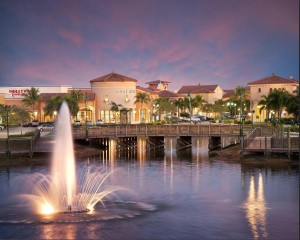
Lee Memorial’s planned Medical Village will be located beside the many shops and restaurants of Coconut Point Mall in Estero.
There are yet other divine plans in-the-works for Estero. Having only recently achieved status as an official incorporated city, community leaders are quickly taking advantage of the authority that has been granted to enact measures which will result in further benefits for all who live here. From the greater development of Estero Community Park and the creation of a central community square to the potential creation of a new cultural arts center, Estero is continuing to advance. Advancement, in this case, is also reflected in Estero’s growing economic base, the creation of new jobs and expansion of professional services. To that point, Lee Memorial Healthcare Systems recently announced plans to invest millions of dollars in the creation of a new medical village in Estero. This development will result in the creation of new emergency medical, diagnostic and rehabilitative services as well as an array of specialty physician offices. Residents who traditionally had to travel to Naples or Fort Myers for such services will now be able to secure needed care only minutes away from their home. Life in Estero keeps getting better.
No doubt about it, given the quality of the amenities and newly constructed homes, the community of Tidewater will attract wide interest from potential buyers. Such interest will be amplified by the fact Estero is very much in-demand too. For its fascinating history, prosperity and the array of activities which can be so conveniently accessed, Estero is quite unlike any other community in Southwest Florida. For those who want to be positioned in this Southwest Florida paradise, we encourage to act while time still permits.
Click here to register to receive more information on homes within Tidewater, Ester


